The detention of Cuban artist Tania Bruguera and the Cuban government’s actions to prevent her performance from taking place in Havana’s Revolutionary Plaza have made international news headlines in the past week. Public outrage about the censorship of the performance and concerns about Bruguera’s whereabouts have circulated in social media outside Cuba, but little in depth consideration of the context and implications of the performance has been available in English. The treatment of the matter has been dominated by expressions of dismay that an internationally recognized artist would be detained over a performance and that (therefore) “Cuba hasn’t changed”—i.e. that two weeks after the announcement diplomatic relations would be restored between Cuba and the US, and the Cuban government still does not allow its citizens to express their political views in public. While the detention of an artist should be cause for concern anywhere, the assumption that a government’s policies and practices could be transformed so quickly is politically naïve or disingenuous.
In the aftermath of the December 17 pronouncements by Barack Obama and Raul Castro about a rapprochement between Cuba and the United States, Bruguera published a public letter to the two presidents and the Pope in which she proposed relocating her 2009 performance Tatlin’s Whisper #6 to the Plaza of the Revolution, thereby offering an open mic to the Cuban citizenry to express their views about their country’s future. According to Bruguera, she was encouraged by friends to carry out her proposal. Calling her project #YoTambienExijo (I Also Demand), she used internet platforms to launch her performance from outside the island and was supported by a number of dissident groups and opposition blogs. Bruguera then travelled to Havana on December 26 and was immediately summoned to a meeting with the director of the National Council of the Fine Arts, Rubén Del Valle, who made it clear that she would not receive authorization or support from official cultural channels. His position was made public in an interview released after the December 27 meeting, as was the Cuban artist and writers’ union repudiation of Bruguera’s performance. On December 29, Bruguera tried to obtain authorization to use the plaza from the National Revolutionary Police. Her request was denied. She made public her intent to continue with the performance without any official support, and was detained on the morning of December 30. Several dissidents who had expressed solidarity with Bruguera’s project were either detained or placed under house arrest at the same time. Among them were Antonio Rodiles and Ailer González of Estado de SATS, blogger Yoani Sanchez and her husband Reinaldo Escobar, activist Eliecer Avila, photographer Claudio Fuentes, and members of the activist group The Ladies in White. Performance artist and poet Amaury Pacheco was also detained near his home in Alamar, though he had not expressed any intention of attending the performance, and artist Luis Trápaga and filmmaker Boris González were arrested at the plaza. As of this writing, Pacheco and González remain in detention, together with a Cuban correspondent for the Madrid-based opposition blog Diario de Cuba and several opposition activists. Bruguera was released on December 31, but her passport was confiscated and, although she has not lived in Cuba for more than five years, she has been ordered to remain on the island for the next two to three months, while law enforcement determines whether or not to charge and try her for disrupting public order and resisting police. Since her first release, Bruguera has been detained two more times: first for calling a press conference and then for protesting the continued detention of some of her supporters (The most detailed and up-to-date reports on the detentions can be found in diariodecuba.com and 14ymedio.com).
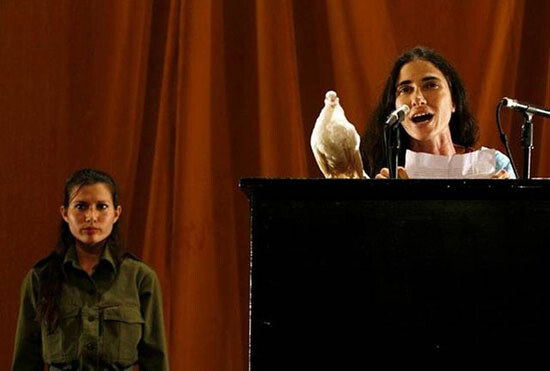

The international outcry over of Bruguera’s detention does not associate it with the December 24 arrest of another artist, Danilo Maldonado Machadoaka El Sexto, who was apprehended when he was on his way to stage a performance in Havana’s Parque Central involving two pigs named Fidel and Raul. El Sexto has not been released and he was not granted an interview with state representatives prior to his arrest. This is probably due to the fact that he is not a member of the Cuban artist and writers’ union and does not command the international press attention that would lead to a rash of unfavorable articles such as those generated by the censorship of #Yo Tambien Exijo.
Media coverage of Bruguera’s performance in English, including a recent editorial in The New York Times, has expressed disappointment that freedom of expression was not respected and that opponents of the Cuban government continue to be subject to threats, harassment, and detention. For those who follow Cuban politics, this comes as no surprise. First of all, the Cuban government’s control over culture, media, and public discourse has been absolute for more than five decades, and vague promises of change are not tantamount to actual modifications in law or policing practices. Second, the recent agreement to swap political prisoners and reopen embassies is not in itself indicative of a political transformation in Cuba—negotiations leading to the release of political prisoners have taken place since 1962—in the immediate aftermath of the Bay of Pigs invasion—and talks leading to restored diplomatic relations have taken place on and off since the 1970s.


Deeper consideration of Bruguera’s situation involves considering whether an artwork can effect political changes in the realm of civil rights and how an artwork might catalyze collective political action. The capacity for manifestations of “people power” to effect change depends on the participation of people in large numbers, and no artist or dissident group currently operating on the island has the capacity to marshal the Cuban citizenry. Cuba supporters contend that this is because of mass support for Cuba’s existing government, while Cuba’s critics argue that political will is suppressed by an authoritarian state. One of the main obstacles to the organizing collective political action outside state channels is technical, which is to say the weak communication infrastructure in Cuba. It is the country with the lowest level of connectivity in the hemisphere. Any attempt to convene a large-scale public gathering in Cuba is thwarted from the onset, not only by the country’s highly effective security apparatus, but also by the fact that the vast majority of Cubans lack access to the internet, cell phones, and home-based landlines.
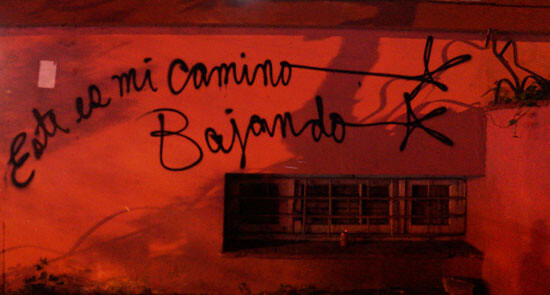

Bruguera’s reliance on the internet to convene the Cuban public has provoked a certain degree of skepticism from critics about her intentions. “The Cuban people” did not show up at the plaza and it is likely that most Cubans on the island have no idea of what #Yo Tambien Exijo is. Cuban dissidents supporting Bruguera have been quite vocal about their disappointment about Washington’s decision to reopen diplomatic relations with Cuba. The dissidents see this as a capitulation to their government’s interests, and Bruguera’s performance has been interpreted by some of her critics as a means of interfering with the negotiations between the two governments. Although comparisons of Bruguera’s project to Occupy Wall Street have been made, there is no evidence of widespread organizing in Cuba that parallels the kind of mass mobilization that preceded the 2011 occupations of New York’s financial center or Tahrir Square. The only activist campaign that has been successful in drawing broad-based support for constitutional reform in Cuba was the Varela Project, spearheaded by Oswaldo Payá in 1998; the campaign was undermined by the arrests of numerous activists in 2003 and the death of Payá in 2012. State repression of protests in Cuba for the most part targets a small group of opposition activists, dissident musicians and artists, and the pattern of protest-repression-detention-release-protest has been repeating for several years without shifts in tactics on either side.
The state’s response to Bruguera’s performance combines usual and unusual elements for the Cuban context. No one in Cuba has the legal right according to Cuban law to use public spaces for demonstrations or cultural events without prior authorization—and it bears mentioning that similar restrictions exist in several other countries, including the United States. Such restrictions are strictly enforced with regard to actions in the Plaza of the Revolution, which is the Cuban equivalent of the White House lawn. The plaza is surrounded by key government offices and guarded round the clock and permissible activities are limited to tourists taking picture of Che’s giant silhouette and official ceremonies. In 2011, a group of Cuban dissidents received sentences ranging from three to five years for distributing anti-government leaflets in the same plaza. The Ladies in White, an activist group led by female relatives of political prisoners, were forcibly dragged out of the plaza by police in 2008.
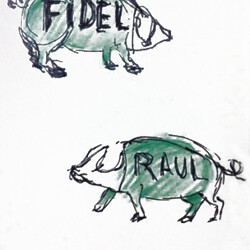

This is the only known sketch of El Sexto’s performance planned for December 24, 2014. The performance did not take place but led to the artist’s detention.
The rhetorical attacks that were launched this week in government sponsored blogs against Bruguera deploy sadly familiar and paranoid nationalist rhetoric—she has been characterized as an agent provocateur supported by counterrevolutionary exile forces, functioning under the influence of foreign trends (see here, here, and here). Cuban artists in previous eras who dared to carry out unauthorized performances in the street or in state galleries were also censored and detained: Juan Sí Gonzalez was stripped of his artist union membership, made subject to public censure, and detained in the 1980s for conducting political performances on Havana streets. Angel Delgado was imprisoned for six months in 1990 for defecating on a Communist party newspaper in a Havana gallery. And in 1991, after poet María Elena Cruz Varela penned a public letter to Fidel Castro calling for democratic reforms that was signed by ten Cuban intellectuals, she was dragged out of her house by police and taunted by a crowd of government supporters while pages of her political writings were shoved down her throat. Cruz Varela received a two-year prison sentence, as did two filmmakers who attempted to document her arrest.
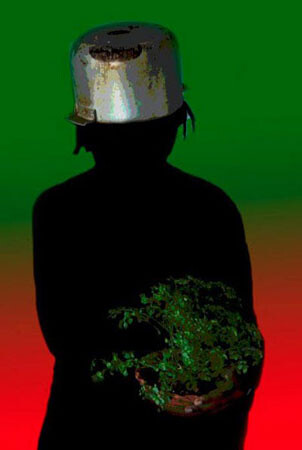

The relatively brief duration of this week’s detentions contrasts with Cuba’s treatment of dissenting voices in previous eras. As has been pointed out by Cuban human rights activists, Raul Castro employs a different strategy for managing dissent on the island—detentions are shorter but the rate of detention has increased since 2008. The amount of international media attention given to the machinery of Cuban state repression has also increased, particularly in relation to internationally known dissident figures. Thanks to the growth of independent journalism and blogging about Cuba in the past five years, it is much easier these days for people outside Cuba to obtain information about the processes and procedures that constitute the exercise of state control. The interplay between cultural bureaucracy and state security in Cuba is more transparent than ever, but this has not prevented the state from using force against its opponents. That said, the rhetoric used by Cuban cultural bureaucrats has become more nuanced in recent years. State supported bloggers may rail against Bruguera as a counterrevolutionary, but National Council of the Fine Arts president Rubén Del Valle took great pains to explain that she is a “child of the revolution” who has erred by engaging in a “reality show” that is more of a political provocation than an aesthetic gesture—in short he displays a capacity for and interest in cultural interpretation. Nonetheless, Del Valle insists on the prerogative of the state to authorize all cultural activity and to keep Cuban art free of politics, as well as the supreme power of the government to orchestrate the transformation of US-Cuba relations.
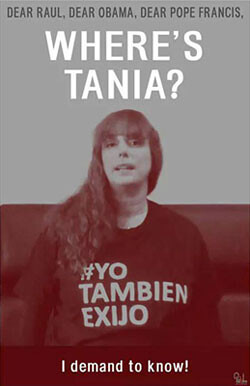

This poster alerts various official figures to Tania Bruguera’s recent detention by the Cuban police.
While art world cognoscenti around the world have been venting on Facebook and circulating petitions regarding Bruguera’s detention, and exiled Cuban intellectuals have been ruminating on the meaning of #Yo Tambien Exijo, little commentary has emerged from Cuban artists living on the island. After a deafening silence in the days prior to the performance, only a few artists have responded to press queries with terse expressions of regret about Bruguera’s detention. Cuban National Arts Prize winner Lázaro Saavedra issued the lengthiest public statement so far via his Galería I-mail on December 30, in which he critiqued Bruguera’s performance as a miscalculated attempt at “aRtivist action” that preaches to Cubans about something they already know too well, i.e. the limits on their freedom of expression, and allows the artist to advance herself professionally with minimal risk, since she resides abroad and enjoys a kind of media coverage that serves as a protective shield. Saavedra claims he would have preferred that Bruguera create a temporary autonomous zone in which the voices of Cubans who live in Cuba and are not well-known artists could actually have been heard. It seems that Saavedra presumes that Bruguera’s performance was supposed to reveal something unknown, or that placing the mechanism of repression under scrutiny in a performance is unnecessary if the Cuban people are already aware of how their government exerts control of them. There are too many examples of artworks that have called upon viewers to review the already known so as to see and understand it differently for such presumptions to be unquestionably sustainable.
While Saavedra rightfully draws a distinction between the meaning and effect of Bruguera’s performance in and outside Cuba, he dismisses the potential worth of staging a media intervention from Cuba for a foreign audience beyond its uses for professional advancement. Cuba may be an island but its culture does not exist solely for local consumption. Bruguera’s foreign audience is the only one at present that can easily consume the flow of information about her artistic proposals, political views, and serial detentions. The Cuban people remain outside the picture so to speak, but Cuba’s status as an art world superpower comes under scrutiny. Cuba draws thousands of foreigners to its cultural events each year and the smooth functioning of its promotional machinery depends on approval from and alliances with foreign institutions, benefactors, art world luminaries and tourists. Cuban artists living on the island rely heavily on income from sales to foreigners. In light of the fact that in the past year, artists and arts professionals invited to biennials in Sao Paulo and Sydney have exercised political will by expressing their opposition to financing from governments and corporate sponsors whose practices they consider unethical, it may well be time for art world cognoscenti who have for so long been charmed by Cuba’s eccentricities, anti-imperialist rhetoric, and relatively cheap art prices to consider what, beyond the convention of indignant public letters, might serve as a valid response to a state that imposes draconian measures to enforce its hegemonic control over public space and discourse.
